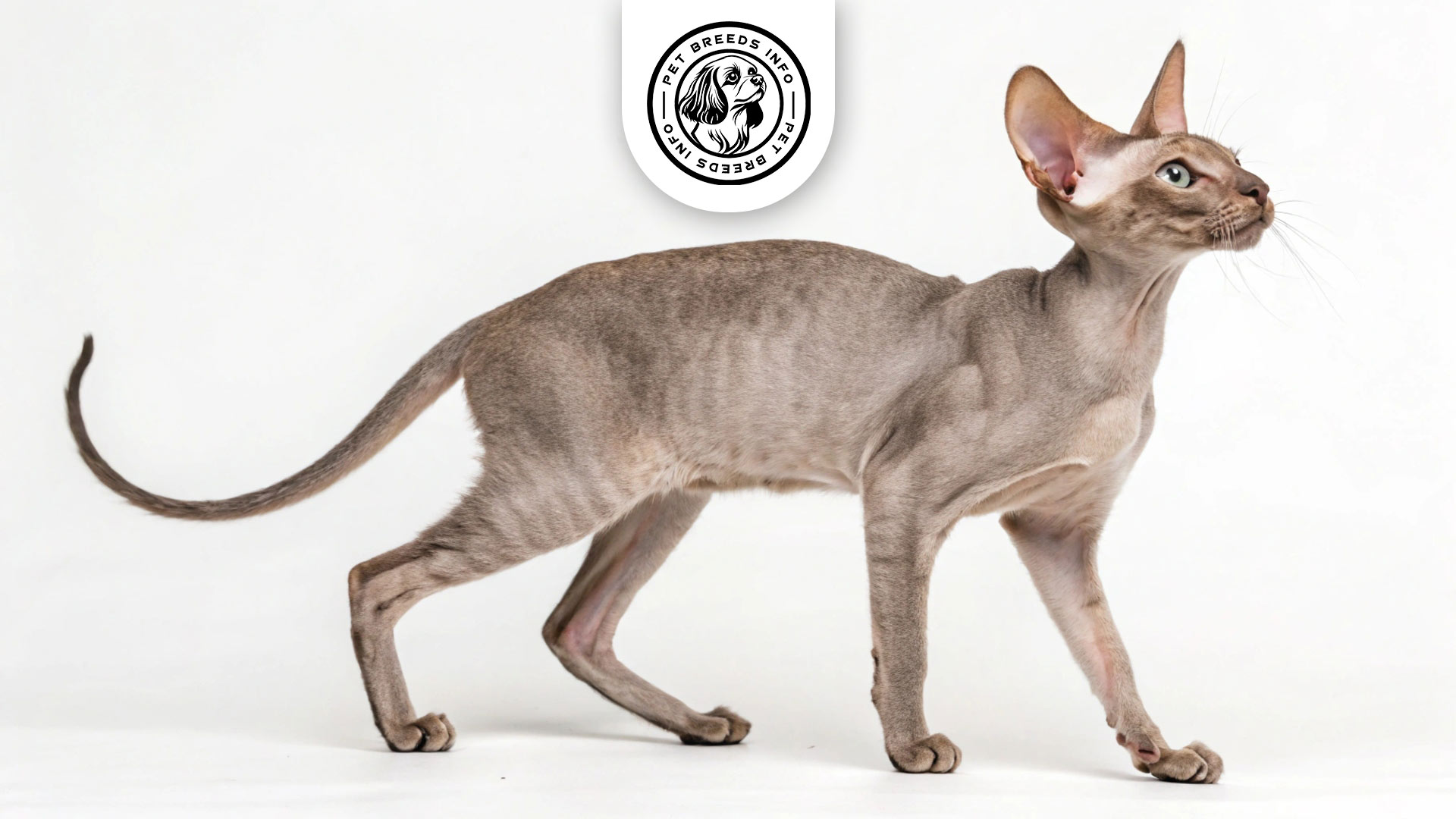Peterbald Cat Breed: Size, Health, Price & Personality
General Introduction of the Breed
The Peterbald is a unique and elegant cat breed known for its distinctive hairless appearance. It originated in Russia and is sometimes referred to as the “Russian Hairless” cat. This breed was developed in the 1990s in St. Petersburg through selective breeding of a Don Sphynx and an Oriental Shorthair, resulting in a sleek and affectionate companion.
Table of Contents
| Weight | Males: 7-14 lbs Females: 5-10 lbs |
| Lifespan | 12-15 years |
| Diet | High-protein, balanced diet (wet or dry). Frequent meals, fresh water. Avoid toxic/processed foods. |
| Care | Daily play, weekly baths, regular ear cleaning. Protect from extreme temperatures and sun. Trim nails, dental care, check skin. |
| Health | Generally healthy but prone to dental/skin issues. Needs protection from cold/sun. Regular vet check-ups are key. |
| Color | Wide variety: solid, tabby, bi-color. |
| Nature | Intelligent, playful, affectionate, social. Bonds strongly with owners. Generally good with other pets. Sensitive to change. |
| Price | $1,500 – $3,000 (depending on lineage, breeder, coat). |
Physical Characteristics
Peterbald cats are medium-sized, with males typically weighing between 7 to 14 pounds and females slightly smaller at 5 to 10 pounds. Their bodies are long and slender, with a graceful build similar to that of the Oriental Shorthair.
The breed is known for its unique coat types, ranging from completely bald to a fine, velvety fuzz. Some Peterbalds may have short, wiry hair, while others retain a near-hairless appearance. Coat colors and patterns can vary widely, including solid, tabby, and bi-color.
They have almond-shaped eyes that come in various colors, including blue, green, and amber. Their ears are large, pointed, and set wide apart, contributing to their elegant look. With long, whip-like tails and fine-boned legs, Peterbalds have a distinct and striking appearance.
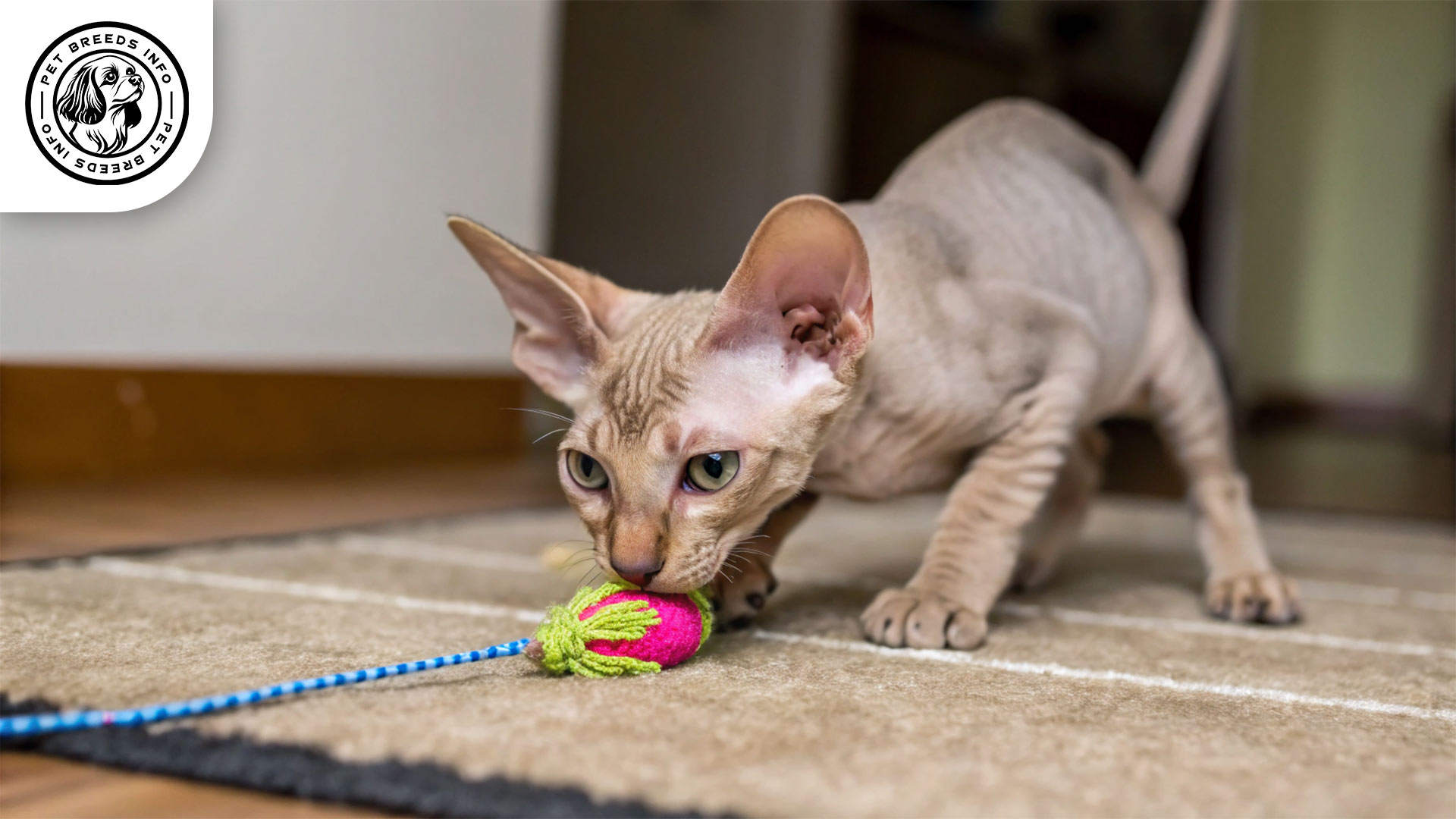
Read More: Persian Cat
Personality and Temperament
Peterbalds are highly intelligent and responsive, making them easy to train. They are curious, playful, and energetic, requiring mental stimulation and interactive play.
These cats are highly affectionate and bond closely with their owners, often following them around like little shadows. They are social and enjoy interacting with humans, including children and visitors.
Peterbalds generally get along well with other pets, including cats and dogs, provided they are introduced properly. They are playful and may exhibit mild hunting instincts, loving to chase toys and engage in interactive games.
Due to their sensitivity, Peterbalds dislike abrupt environmental changes and prefer a stable, loving home environment.
Care and Maintenance Requirements
Peterbalds are energetic cats that require daily play and exercise. They thrive in both small apartments and spacious homes as long as they receive enough attention and stimulation.
Since they are hairless or have minimal fur, they do not shed as much as other cats but still require regular skin care. Weekly bathing is necessary to remove oil buildup, and their ears should be cleaned routinely to avoid wax accumulation.
Peterbalds are sensitive to temperature extremes. In cold weather, they may need warm clothing or heated areas, while in hot weather, they must be protected from sunburn.
Basic hygiene includes regular nail trimming, dental care, and checking for potential skin irritations or infections.
Diet and Nutrition
A balanced, high-protein diet is best for Peterbalds. Both wet and dry food options can be suitable, but high-quality formulas rich in animal proteins are recommended.
These cats have high metabolisms, so they require frequent meals throughout the day. Fresh water should always be available.
Avoid feeding toxic foods such as onions, garlic, chocolate, and raw fish. Processed foods with artificial additives should also be limited.
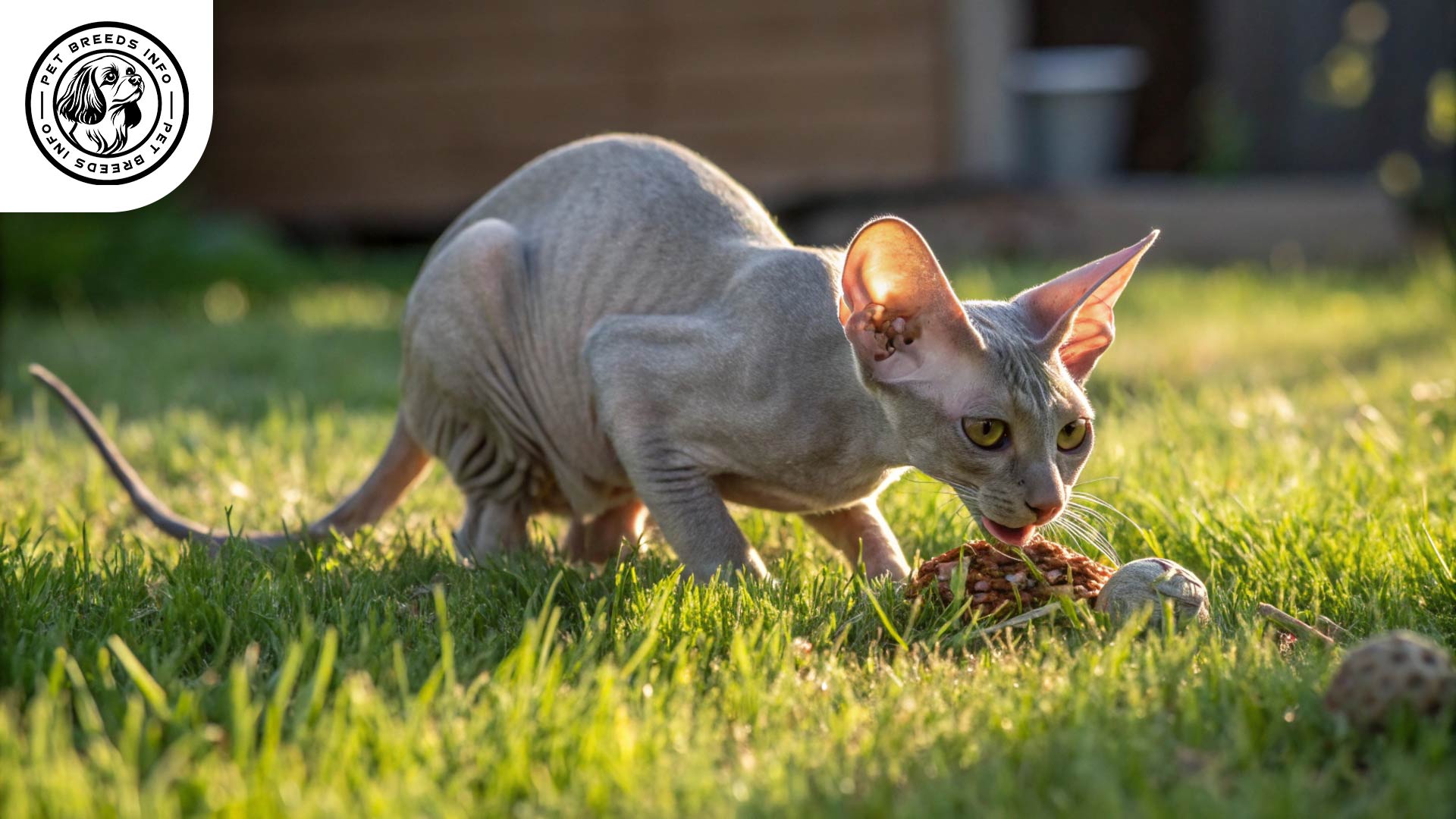
Health and Common Medical Issues
Peterbalds are generally a healthy breed but may be prone to genetic conditions like dental issues and skin sensitivities due to their hairless nature.
They require protection from extreme cold and sun exposure as they lack fur insulation. Their average lifespan ranges from 12 to 15 years with proper care.
Routine veterinary check-ups, vaccinations, and parasite prevention treatments are essential to maintaining their health.
Read More: Oriental Shorthair
Training and Behavior Management
Peterbalds are intelligent and highly trainable. They respond well to positive reinforcement techniques such as treats and praise.
Early socialization is essential to ensure they are comfortable around people and other pets. Providing scratching posts and engaging toys helps prevent destructive behavior.
Consistency and patience are key to teaching good habits, and they are quick learners when training is approached in a positive manner.
Interaction with Other Animals and Humans
Peterbalds are affectionate and form strong bonds with their owners. They thrive in family environments and enjoy interacting with children who treat them gently.
They socialize well with other pets and enjoy companionship, making them ideal for multi-pet homes.
Since they crave attention and interaction, they are better suited for households where someone is often present rather than being left alone for long hours.
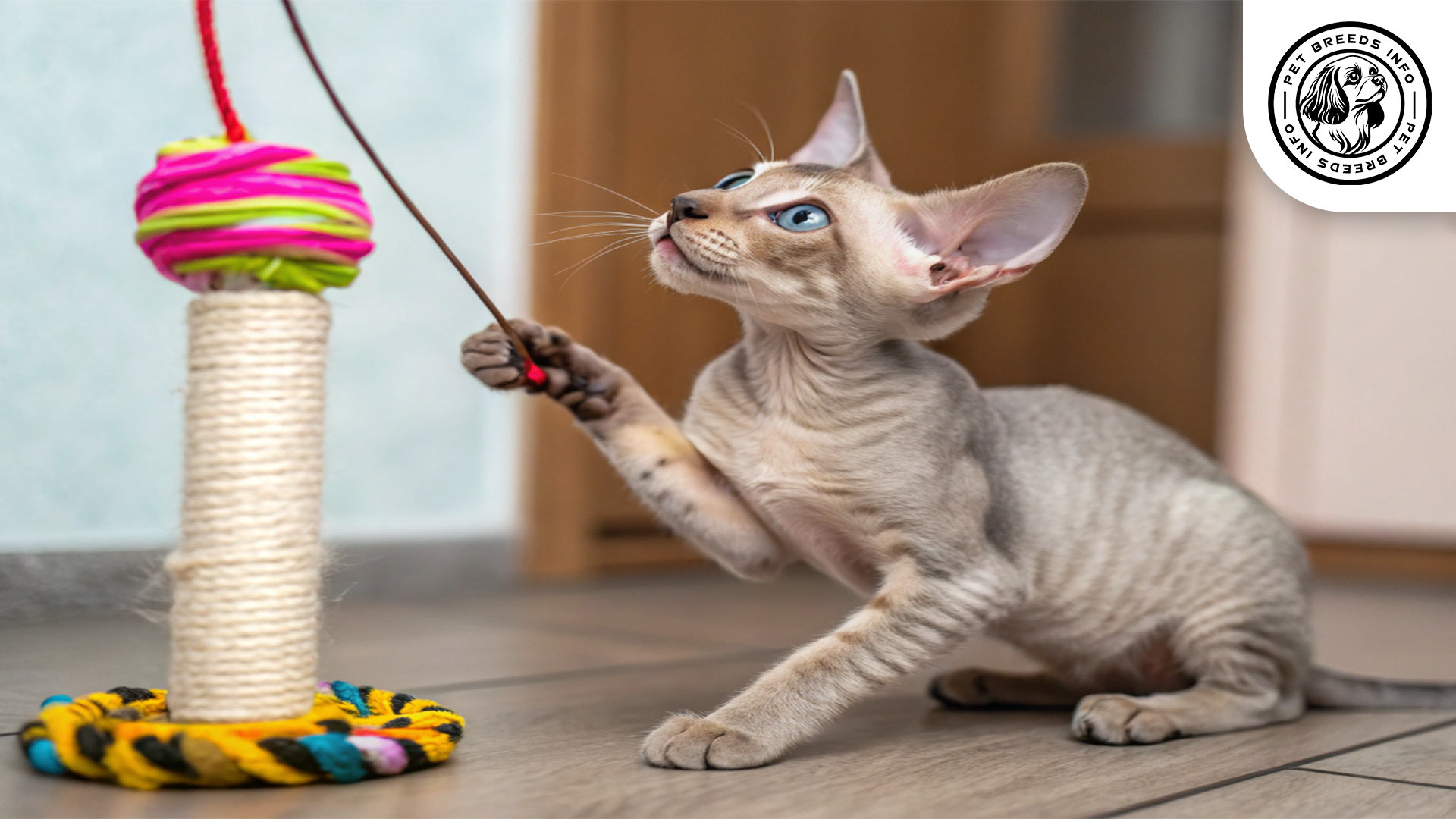
Price and Availability
The cost of a Peterbald kitten varies, typically ranging from $1,500 to $3,000 depending on lineage, breeder reputation, and coat type.
When adopting or purchasing a Peterbald, it is important to choose a reputable breeder or adoption center that prioritizes health and ethical breeding practices.
Potential owners should ensure they are adopting from responsible sources and can check shelters or breed-specific rescues for adoption opportunities.
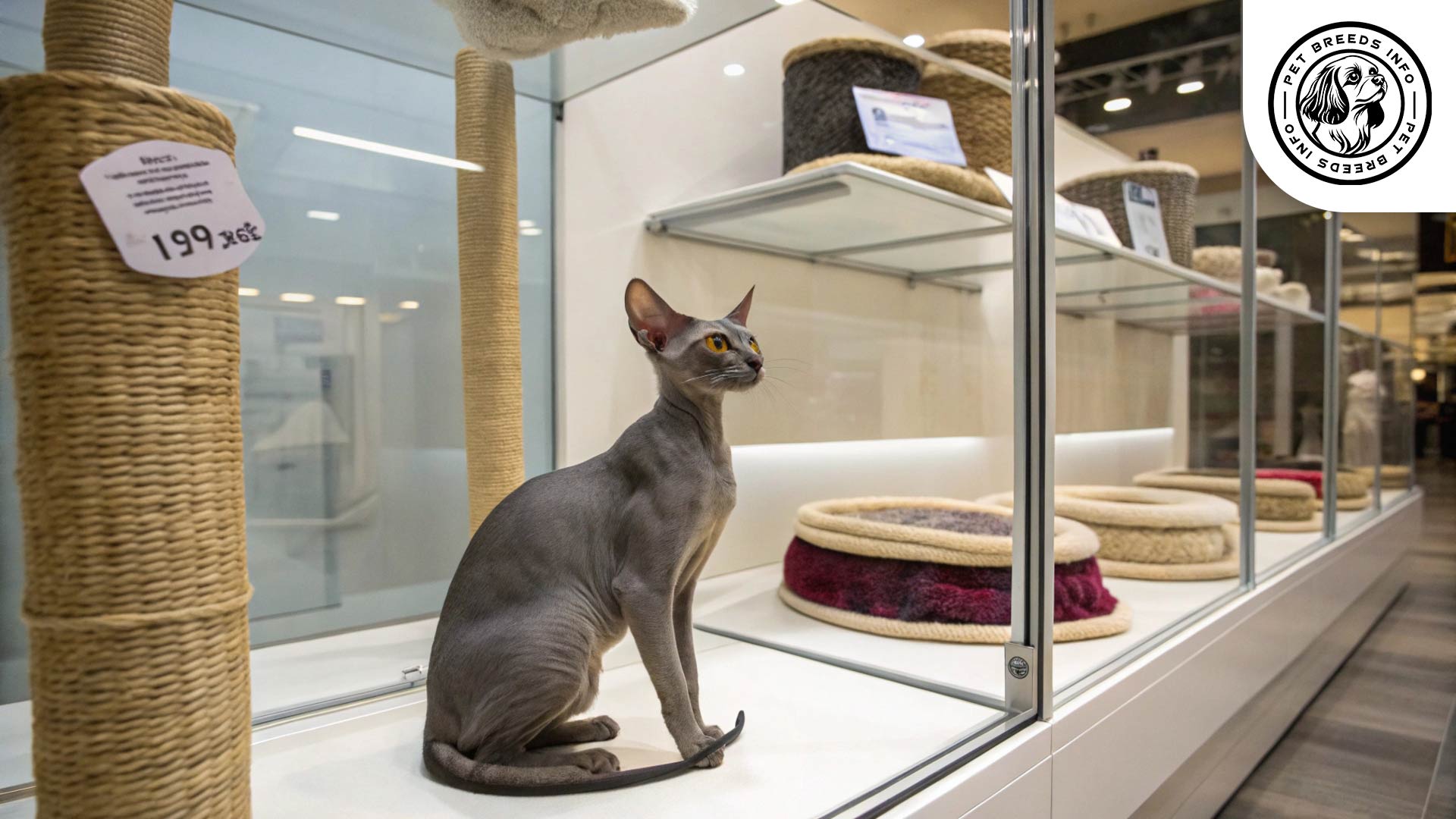
Conclusion and Final Thoughts
The Peterbald is an affectionate and sociable breed, ideal for owners who can provide them with love, attention, and proper care.
They are well-suited for families, singles, or multi-pet households, but they require an involved and interactive owner.
Before bringing home a Peterbald, potential owners should be prepared for their unique grooming needs, social nature, and environmental sensitivities.
Read More: Singapura Cat
FAQ
What is the Peterbald cat breed known for?
The Peterbald is a unique and elegant cat breed known for its distinctive hairless appearance. Originating in Russia, they are often called the “Russian Hairless” cat and are known for being sleek and affectionate companions.
Do Peterbald cats require a lot of grooming?
Yes, despite their lack of fur, Peterbalds require regular grooming. Weekly bathing is necessary to remove oil buildup on their skin, and their ears should be cleaned routinely. They also need protection from extreme temperatures and sun exposure.
What is the typical personality of a Peterbald cat?
Peterbalds are highly intelligent, curious, playful, and energetic cats. They are very affectionate and bond closely with their owners, often following them around. They are also social and generally get along well with children and other pets.
How much does a Peterbald cat typically cost?
The cost of a Peterbald kitten can vary, typically ranging from $1,500 to $3,000. The price depends on factors such as lineage, the reputation of the breeder, and the specific coat type of the kitten.
